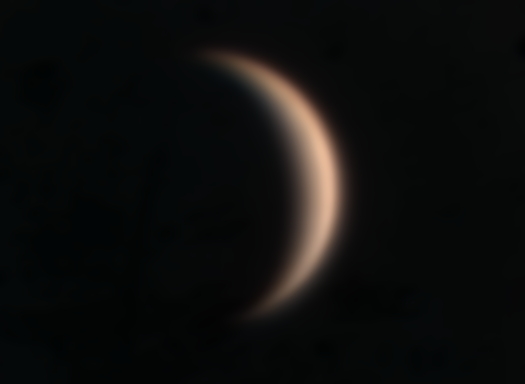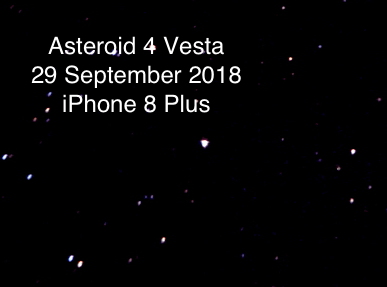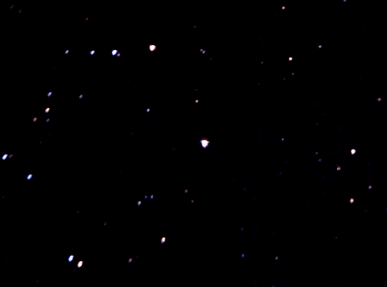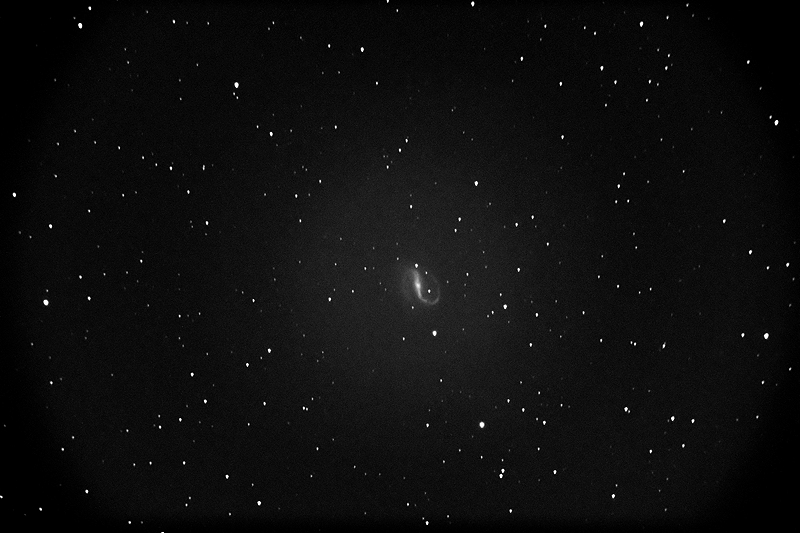iPhone Astrophotography: Venus, Asteroid Vesta;
D850 DSLR: NGC7479 Galaxy
Posted: 30 September 2018
Clouds began arriving mid-day on Saturday, 29 September 2018, possibly from Pacific Hurricane Rosa which is expected to begin impacting Arizona on Monday, 1 October. Fortunately, by late afternoon the sky was mostly clear again.
|
Open: Saturday, 29 September 2018, 1715 MST Temperature: 86°F |
Session: 1285 Conditions: Mostly clear, breezy |
Equipment Used:
12" f/8 LX600 w/StarLock
2" 24mm UWA eyepiece
1.25" 26mm eyepiece
2" 4X Powermate
2" 2X Powermate
Camera:
iPhone 8 Plus
D850 DSLR
I opened the observatory about an hour before sunset to image the planet Venus higher in the sky.
1725 MST: LX600 ON, StarLock OFF, High Precision OFF.
Viewed Venus, 102X.
Then began setting up for iPhone imaging of Venus at various magnifications. I used 1084X, 542X, and 271X. This is a stack of 2491 slo-mo (240fps) video frames from the Camera app, afocal 1084X:

1750 MST: ended Venus imaging.
Next, I set the observatory air conditioner to not come on automatically. I hope to not need it for the rest of the year and not until next summer.
1807 MST: viewed Jupiter, 102X. The Great Red Spot was visible; only one moon was currently visible against the bright sky.
1813 MST: sunset. Calm now.
1814 MST: viewed Saturn, 102X.
1821 MST: viewed Mars, 102X. The South Polar Cap and a large dark surface area were visible.
Returned to Saturn and switched to the 1.25" 26mm eyepiece for iPhone imaging of Asteroid 4 Vesta once sky was dark enough.
1834-1843 MST: took a short break from the observatory.
1846 MST: viewed Saturn, 94X. Four moons were visible.
1850 MST: slewed to the star Nunki and SYNCed the AutoStar. While waiting for the sky to get darker I prepared the D850 DSLR for prime focus imaging later in the session.
1902 MST: Wi-Fi ON. Used SkySafari 6 Pro on the iPhone to GOTO Asteroid Vesta. Viewed Vesta, 94X. 1903 MST: Wi-Fi OFF. Locked the primary mirror. Attached the iPhone.
1907 MST: StarLock ON.
1909 MST and 2009 MST: took StarLock autoguided images of Asteroid 4 Vesta, afocal 94X, using NightCap Camera (Long Exposure, Light Boost, ISO 8448, 1/3sec, 1 minute exposure). 1925 MST: clouds were approaching the asteroid and eventually covering it, causing the StarLock to temporarily lose its guide star. 1940 MST: clouds were now clear of the asteroid. 2010 MST: StarLock OFF.
Here is the image from 1909 MST, followed by the merged animation with images taken one hour apart:


It is neat to be able to capture an asteroid with the iPhone!
I removed the phone and observed M72 (globular cluster), 102X.
Then viewed NGC7479 (galaxy), 102X, in preparation to image it for my Extragalactic Supernova Project. SYNCed the AutoStar on NGC7479. Mounted the D850 DSLR at prime focus of the 12" telescope.
2031 MST: High Precision ON. StarLock ON.
Began imaging NGC7479. StarLock autoguided was bad, frequently losing lock. I lost several images due to poor guiding. This image, StarLock autoguided, ISO 6400, White Balance 5000K, was interrupted after 2 minutes, instead of being my normal 5 minutes exposure:

I then looked at the sky. The western half was covered by clouds! The eastern half of the sky, where I was imaging, had lots of clouds too. No wonder autoguiding was so bad. I started closing up for the night.
2050 MST: LX600 OFF.
|
Close: Saturday, 29 September 2018, 2103 MST Temperature: 75°F |
Session Length: 3h 48m Conditions: Mostly cloudy |
Comments are welcome using Email. Twitter users can use the button below to tweet this report to their followers. Thanks.
Cassiopeia Observatory Home Page
Copyright ©2018 Michael L. Weasner / mweasner@me.com
URL = http://www.weasner.com/co/Reports/2018/09/30/index.html
